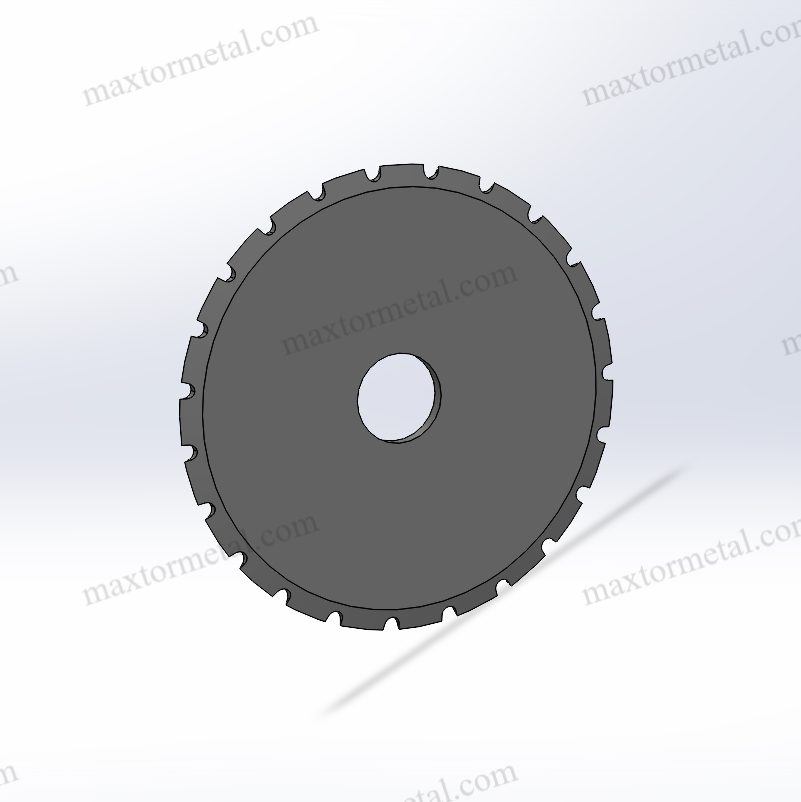
MỘT perforating blade is a tool designed to create small cuts, allowing you to tear or separate parts without damaging the remainder. The process of perforating is crucial for both crafts and industries due to its usefulness and precision.
In the realm of crafts, it enables you to create intricate designs or tear-off sheets for scrapbooks. In industrial applications, it is essential for packaging, labels, and fabric production. Companies like Nam Kinh Metal, which boasts 18 years of experience, specialize in manufacturing custom blades tailored to various needs. If you require assistance, don’t hesitate to Liên Hệ their sales engineers for expert advice.
Những điểm chính
- Perforating blades make neat cuts, useful for crafts and industries.
- Types like rotary and straight-edge blades have special uses for accuracy.
- Strong materials like steel and tungsten make blades kéo dài lâu hơn and need fewer changes.
- These blades help work faster and waste less in many tasks.
- Lưỡi Dao Tùy Chỉnh can be made for specific jobs, helping both hobbyists and workers.
Understanding the Meaning of “Perforated”
Definition of Perforated
Perforated materials have tiny, evenly spaced holes or cuts. These are made using tools like perforating blades for accuracy. Perforation helps materials work for filtering, separating, or improving designs.
Characteristics of Perforated Materials
Perforated materials are light but very strong. Their thin build and strength make them useful in many ways. The size and pattern of holes are often made to fit specific needs. For example, perforated sheets are used for filtering, screening, or even building designs. These materials let light, air, sound, and liquids pass through, making them great for crafts and industries.
Importance in Various Industries
Perforated materials are important in construction, electronics, and car-making. They help by controlling air, cutting noise, and looking good. For example, in HVAC systems, perforated sheets work as filters, keeping them efficient and quiet. Their flexibility makes them key in modern factories.

Uses of Perforated Materials
Crafting Applications
In crafts, perforated materials help make detailed designs and patterns. They are great for scrapbooking, embroidery, and art projects. In the Victorian era, perforated cardboards were used for embroidery, showing their long history in crafts.
Ứng dụng công nghiệp
Industries use perforated materials for practical reasons. For example, building walls and stairs often use perforated metal. This metal blocks UV rays but lets light and air through. They are also used in things like speaker covers, car grills, and dryer drums. Their ability to filter and protect makes them vital in industries.
Examples of Perforated Products
Common Crafting Items
Crafting uses perforated paper, cardboard, or fabric. These materials are used for tear-off sheets, embroidery, and textures. Their accuracy and ease make them popular with hobbyists and professionals.
Industrial Goods
In industries, perforated products include metal sheets, filters, and screens. These items help control air, reduce heat, and improve safety. The table below shows how perforated materials are used in different industries:
| Ngành công nghiệp | Typical Uses for Perforated Materials |
|---|---|
| Hàng không vũ trụ | EMI/RFI Shielding, Air/Gas Control, Acoustics |
| Sự thi công | Display/Aesthetics, Air/Gas Control |
| Điện tử | Heat Dissipation, EMI/RFI Shielding |
| Ô tô | Air/Gas Control, Display/Aesthetics |
| Ngành Y Tế | Air/Gas Control, Heat Dissipation |
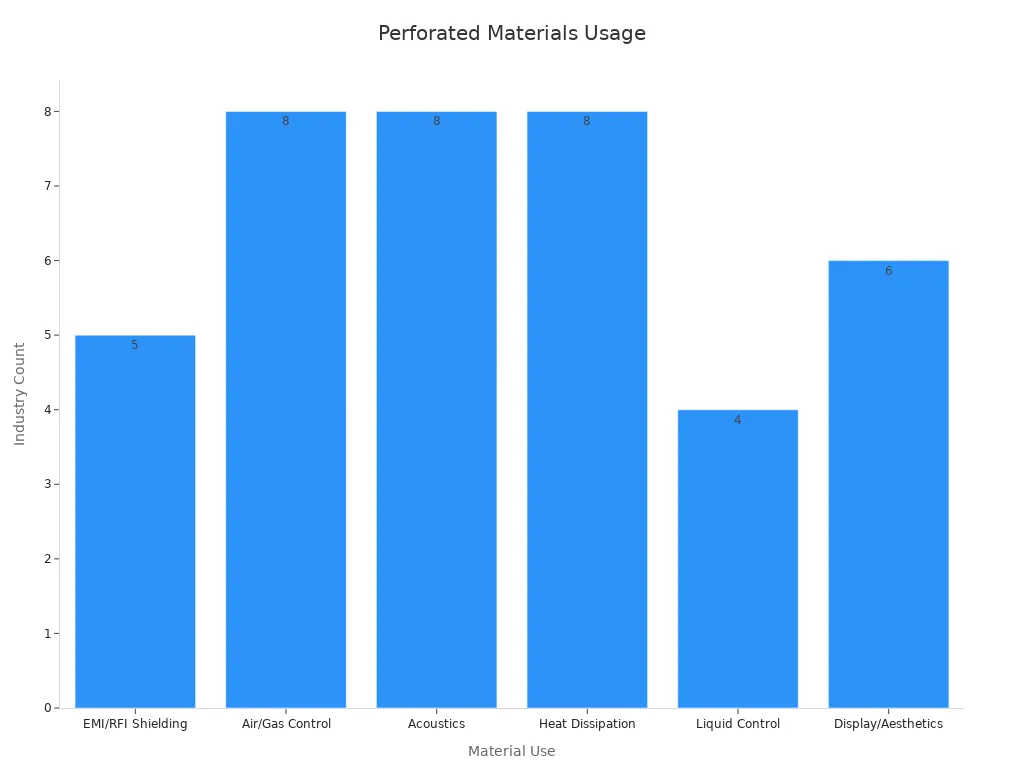
Perforated materials are used everywhere, from decoration to function. Their many uses keep them important in crafts and industries.
Các loại lưỡi đục lỗ
Perforating blades come in different shapes for various jobs. Knowing the types helps you pick the right one. Below are three main kinds of perforating blades.
Lưỡi đục lỗ quay
Rotary perforating blades are also called circular blades. These blades spin while cutting, making them great for fast work. They are used in packaging, printing, and fabric industries. These blades make neat, even cuts quickly and accurately.
Rotary blades are very popular in growing industries. For example, factories use them for precise cutting as automation increases. The table below shows why rotary blades are in demand and their future growth:
| Ngành công nghiệp | Why They Are Needed | Future Growth Predictions |
|---|---|---|
| Oil and Gas | More energy use and better extraction methods | Global energy demand to rise by 30% by 2040 |
| Sự thi công | More cities mean more buildings | 56% of people live in cities now, rising to 68% by 2050 |
| Chế tạo | Automation needs tools for exact cutting | Advanced manufacturing to grow 5% yearly over the next 10 years |
| Regional Growth | Fast industrial growth in areas like Asia-Pacific | Asia-Pacific to invest USD 1 billion yearly in drilling tech through 2027 |
Rotary blades are key for industries needing speed and accuracy. Their flexibility makes them useful for many tasks.
Straight-Edge Perforating Blades
Straight-edge perforating blades are also called straight blades. These blades are best for straight cuts like tear-off sheets or labels. They are sharp and dependable, making them popular in crafts and industries.
Tests show why straight-edge blades are special. The table below explains how their sharpness and use are measured:
| Test Method | Nó làm gì | Why It Matters for Straight Blades |
|---|---|---|
| Blade Sharpness Index (BSI) | Measures how sharp a blade is | Helps compare straight blades to others |
| Optical Methods | Uses lasers and shadows to check blades | Shows how reliable straight blades are |
| Vision Systems | Uses images to test blade sharpness | Explains cost and complexity of straight blades |
Straight blades are perfect for clean, straight cuts. They give high-quality results every time.
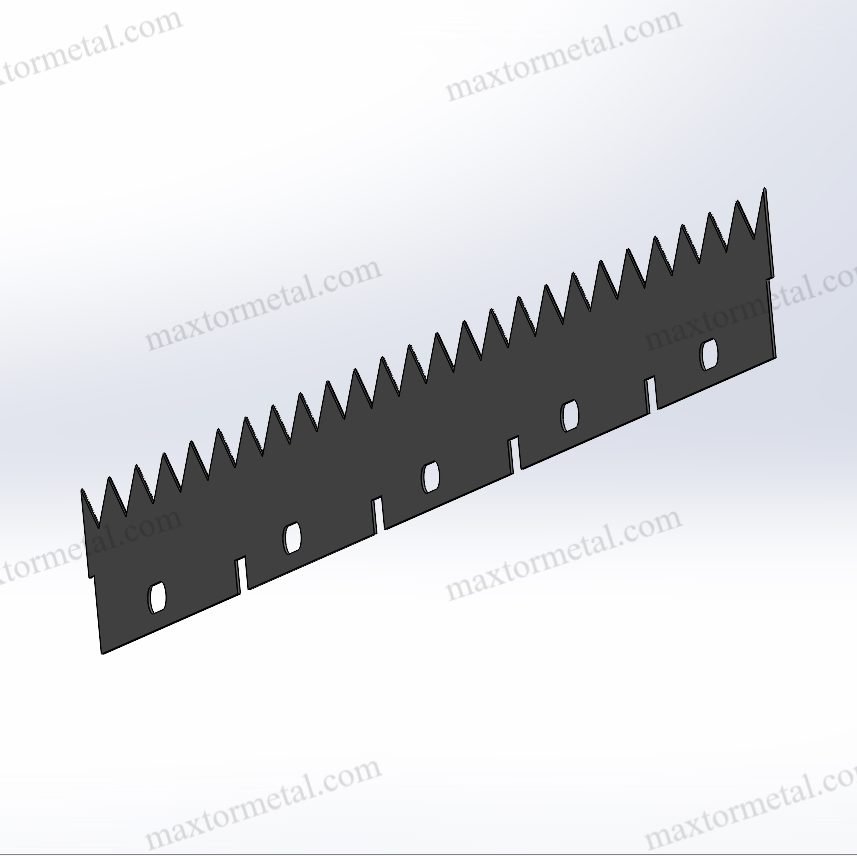
Custom and Specialty Perforating Blades
Custom and specialty blades are made for specific jobs. These blades are used for things like coupons, gift cards, or medicine labels. Their ability to adapt makes them useful in many industries.
Specialty blades are often used for unique tasks. For example:
- Perforated labels are used for tickets, tags, and forms.
- Security tags and seals are used in medicine and electronics.
- Custom blades are made for special designs or needs.
If you need something specific, custom blades can help. Their flexibility makes them important for crafts and industries alike.
Materials Used to Make Perforating Blades
The materials used to make perforating blades affect how they work. Each type of material has special features for different jobs. Below is a simple guide to the most common materials and their uses.
1. High-Carbon Steel
High-carbon steel is a popular choice for perforating blades. It is very hard and lasts a long time. This makes it great for tasks needing sharp edges.
- Thuận lợi:
- Stays sharp for a long time.
- Resists wearing out.
- Affordable for general use.
- Tốt nhất cho:
- Cutting paper.
- Light industrial work.
Mẹo: Use high-carbon steel for repeated tasks. It is strong and reliable.
2. Stainless Steel
Stainless steel is often used where rust resistance is important. It is strong and handles moisture and chemicals well.
- Thuận lợi:
- Does not rust.
- Easy to clean.
- Safe for food-related tasks.
- Tốt nhất cho:
- Food processing.
- Medical packaging.
3. Tungsten Carbide
Tungsten carbide is super hard and tough. It works well for heavy-duty jobs needing precision.
- Thuận lợi:
- Very hard and durable.
- Lasts long under stress.
- Stays sharp for a long time.
- Tốt nhất cho:
- Cutting tough items like plastics.
- High-speed machines.
4. Ceramic
Ceramic blades are less common but useful for certain tasks. They are light, non-magnetic, and don’t rust.
- Thuận lợi:
- Non-conductive and safe with chemicals.
- Very sharp edges.
- No rust problems.
- Tốt nhất cho:
- Electronics work.
- Special craft projects.
5. Tool Steel
Tool steel is strong and can handle tough jobs. It is often used for custom blades.
- Thuận lợi:
- Resists wear and tear.
- Can be heat-treated for extra strength.
- Good for detailed designs.
- Tốt nhất cho:
- Custom blades for unique cuts.
- Heavy industrial tasks.
| Vật liệu | Các tính năng chính | Sử dụng phổ biến |
|---|---|---|
| Thép với hàm lượng các bon cao | Hard, long-lasting | Paper, light tasks |
| Thép không gỉ | Rust-proof, durable | Food, medical packaging |
| Cacbua Vonfram | Super hard, long-lasting | Plastics, textiles, fast machines |
| Gốm sứ | Light, rust-free | Electronics, crafts |
| Thép công cụ | Tough, heat-treatable | Custom blades, heavy work |
When picking a material, think about what you’ll cut and where you’ll use it. Each material has its own strengths, so choosing the right one helps the blade last longer and work better.
Ghi chú: For special needs, talk to a blade maker. They can help you find the best material for your job.
How Perforating Blades Work
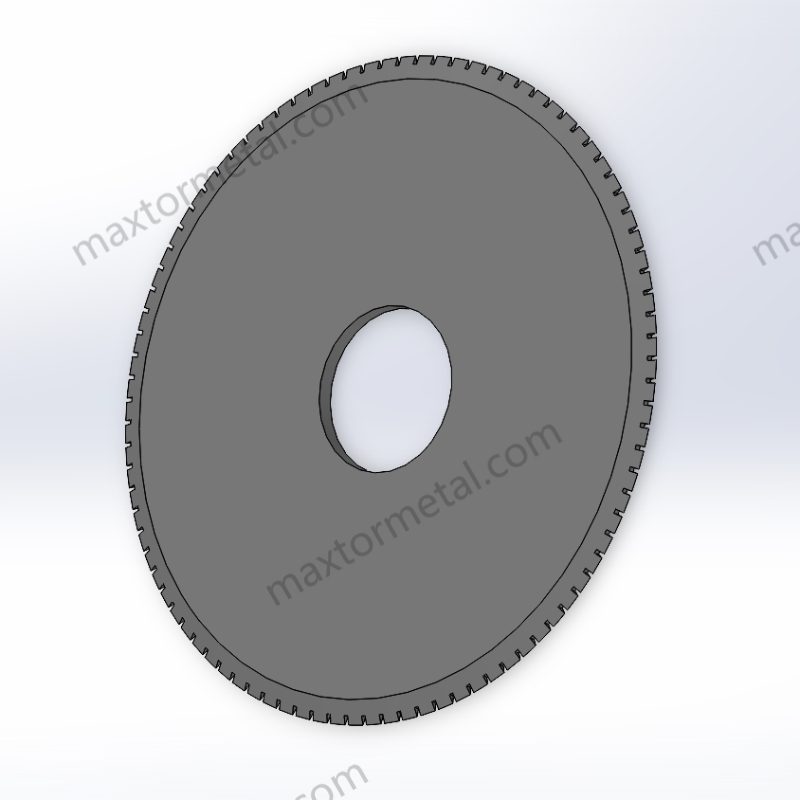
Key Design Features for Precision Cutting
Perforating blades are made with special features for accuracy and strength. These features help them work well in many tasks. Important design elements include:
- Blade Construction: Blades can be removed or adjusted for precise cutting.
- Blade Seats: These hold the blade in place for better accuracy.
- Clamping Mechanism: A strong clamp keeps the blade steady while cutting.
- Custom Perforations: Blades come in different types for specific jobs.
- Chất lượng vật liệu: Strong materials like stainless steel make blades last longer.
For example, a packaging company used DLC-coated blades and needed fewer replacements. This improved their efficiency by 53%. Adjusting blade shapes also reduced stress by 27%, making them last longer.
| Design Feature | Sự miêu tả |
|---|---|
| Blade Construction | Adjustable blades for accurate and clean cuts. |
| Blade Seats | Keeps blades steady for better cutting results. |
| Clamping Mechanism | Prevents blade movement during use. |
| Custom Perforations | Different designs for various tasks. |
| Chất lượng vật liệu | Durable materials for long-lasting performance. |
These features make perforating blades dependable for crafts, packaging, and factories.
Mechanisms in Manual and Automated Tools
Perforating tools can be manual or automated, depending on the job. Manual tools need a person to operate them, making them good for small projects. Automated tools are better for big jobs because they save time and effort.
Here’s a comparison of semi-automatic and fully automated machines:
| Tính năng | Semi-Auto Creasing and Perforating Machine | Auto Creasing and Perforating Machine |
|---|---|---|
| Manual Intervention | Đúng | KHÔNG |
| Feeding Mechanism | Hand-fed | Machine-fed |
| Efficiency for High Volume | Thấp hơn | Cao hơn |
| Operator Involvement | High (manual feeding needed) | Low (automated process) |
Automated tools are great for industries like packaging and textiles. Manual tools are still useful for detailed, small-scale work.
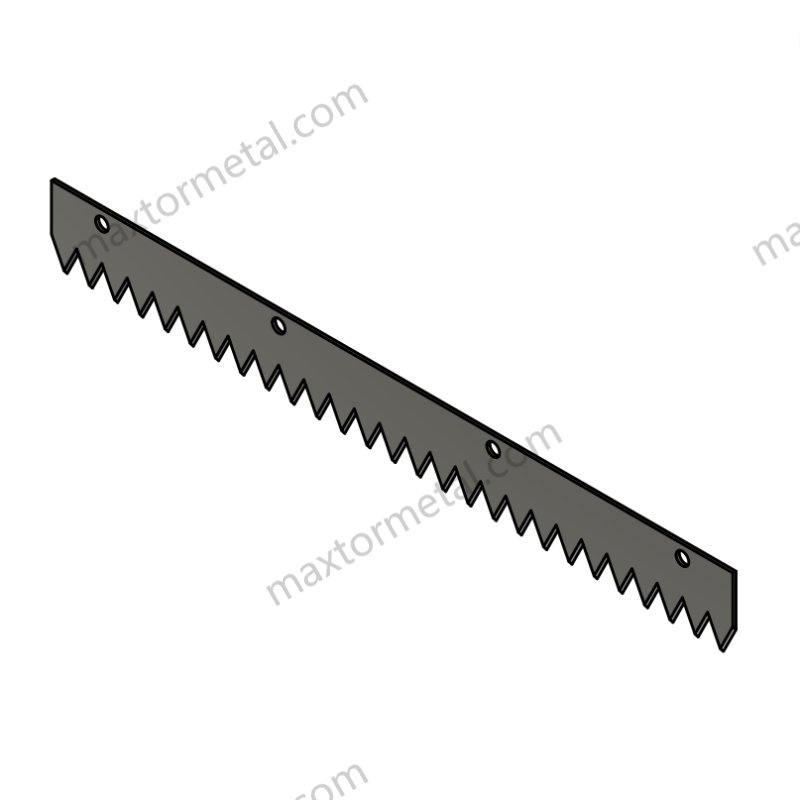
Factors Influencing Performance, Such as Material Type and Blade Sharpness
How well a perforating blade works depends on several things. The material matters a lot. High-carbon steel is good for light jobs, while tungsten carbide is best for tough tasks. Sharp blades cut cleaner and waste less material.
Taking care of blades is also important. Sharpening them often and storing them properly makes them last longer. For example, industrial blades need regular checks to stay sharp. Materials like ceramic or DLC coatings help blades resist wear and stay effective.
Knowing these factors helps you pick the right blade for your needs, ensuring better results.
How Perforating Blades Are Used in Crafting
Perforating blades are must-have tools for crafting. They help you make neat cuts and add creative designs to your projects. From making tear-off calendars to decorating scrapbook pages, these blades make crafting easier and more fun.
Scrapbooking and Paper Projects
Scrapbook lovers use perforating blades to make their pages unique. These blades create dotted lines that are easy to tear. You can use them to make hidden pockets, foldable flaps, or fun tickets for your scrapbook.
Paper crafting also gets better with perforating blades. They help you make greeting cards, invitations, or origami with clean cuts. You can adjust the depth and spacing of the cuts for a polished look. With these blades, your ideas can come to life.
Mẹo: If you’re new, try simple projects like bookmarks or gift tags. These are easy and help you learn how to use the blade.
Tear-Off Pages and Tickets
Perforating blades are great for making tear-off pages. They are perfect for raffle tickets, journals, or calendars. These blades give your projects a neat and professional finish.
Here are some ways to use them:
- Make booklet pages that tear out easily.
- Create raffle tickets with smooth edges.
- Design journals with removable pages.
- Craft calendars with tear-off monthly sheets.
Crafters and small businesses love these blades for their versatility. For example, if you’re making custom calendars, perforating blades help you create pages that are both useful and attractive.
Adding Patterns and Textures
Perforating blades make it simple to add patterns and textures to your work. You can use them on paper, fabric, or thin metal to create unique designs. These blades are great for greeting cards, gift wraps, or wall art.
For instance, you can make a lace-like design on paper for wedding invites. Or, add dotted textures to fabric for a quilt. These blades ensure your designs look amazing, whether it’s a small craft or a big art project.
Bạn có biết không? Nanjing Metal, with 18 years of experience, makes custom perforating blades. They can help you find the right blade for your crafting needs.
Perforating blades make crafting more creative and professional. From tear-off pages to decorative designs, these tools are easy to use and versatile. For high-quality blades, contact Nanjing Metal’s experts for advice and custom options.
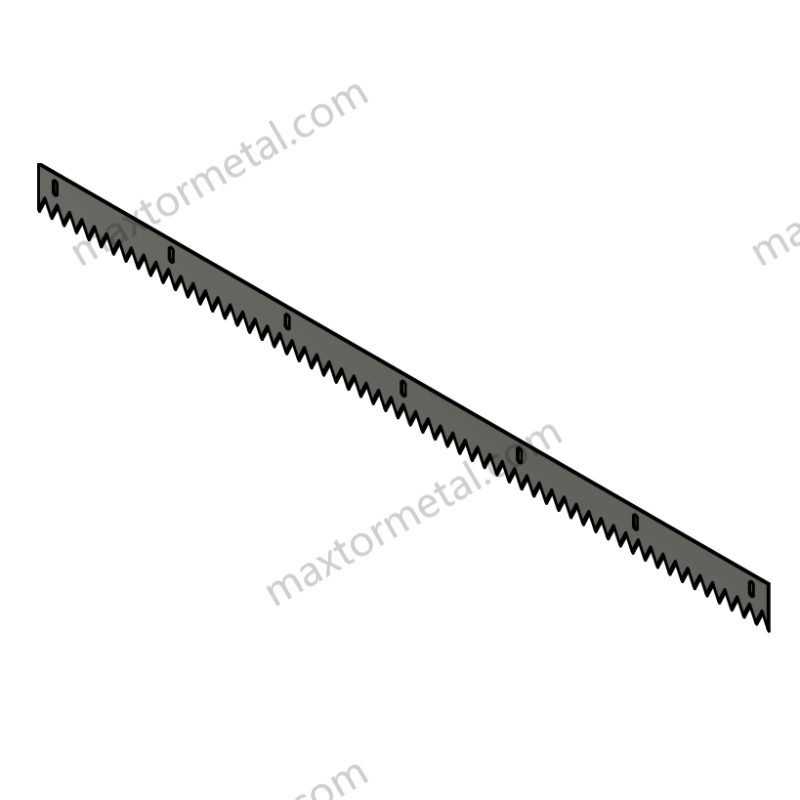
Industrial Uses of Perforating Blades
Perforating blades are crucial toolsin many industries. They help make clean and accurate cuts, improving production processes.
Packaging and Labeling Industries
In packaging and labeling, these blades create tear-off parts and neat seals. They also cut labels precisely. You’ll see them used for food packs, drink labels, and shipping materials. Better blade designs can boost production speed and reduce waste. For example:
- Advanced blades increase production speed by 20%.
- They cut packaging waste by 20-30%.
- Coatings like TiN or DLC make blades last 25-40% longer.
| Lợi ích | Sự va chạm |
|---|---|
| Hiệu quả sản xuất | Boosts production line efficiency by 12-15% yearly. |
| Throughput Improvement | Speeds up production lines by up to 20%. |
| Giảm thiểu chất thải | Cuts packaging waste by 20-30%. |
| Durability Enhancement | Makes blades last 25-40% longer with special coatings. |
These features make perforating blades essential for modern packaging. They ensure high quality and save costs.
Textile and Fabric Production
In textiles, perforating blades make patterns and clean cuts. They are used for breathable fabrics, sportswear, and decorative designs. These blades prevent fabric fraying, keeping quality high. Strong materials like tungsten carbide are used for these blades. They handle fast machines and meet the demand for custom, high-quality fabrics.
Food Processing and Other Specialized Industries
In food processing, perforating blades make packaging that keeps food fresh. They allow air to flow in packs for fruits, vegetables, and baked goods. These blades also cut dough, slice cheese, and make tear-off seals. Other industries, like electronics and medical packaging, use them too. They create ventilation holes and precise cuts for sterile packs. Their versatility makes them useful for many industries.
Nanjing Metal has 18 years of experience making industrial blades. They offer custom solutions for your needs. Contact their team to find the right blade for your work.
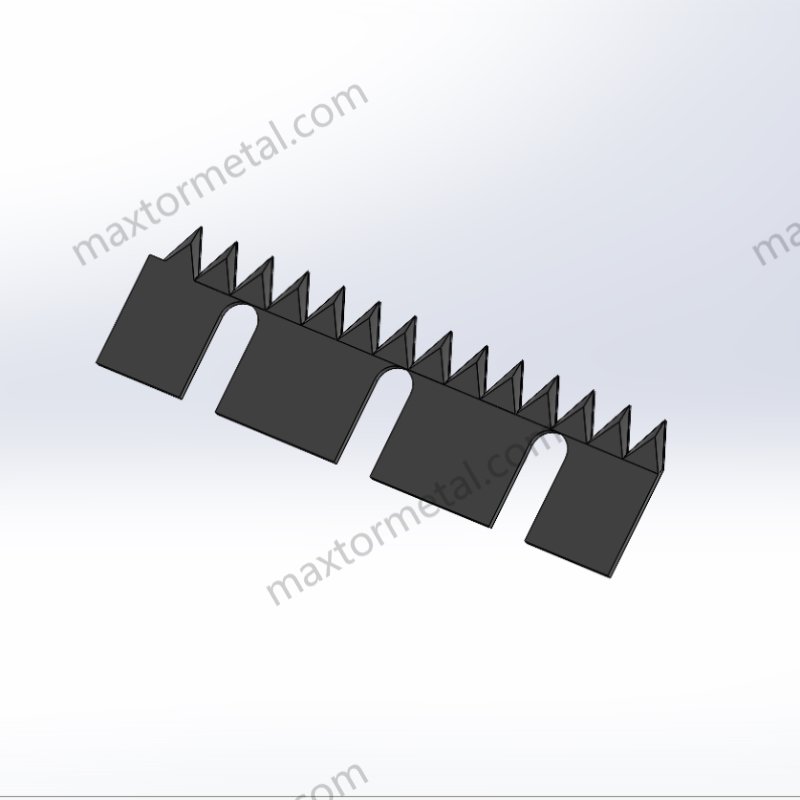
Benefits of Using Perforating Blades
Precision and Accuracy in Perforation
Perforating blades are great for making precise, clean cuts. They create even perforations, which are perfect for packaging, crafts, and factories. For example, when making tear-off sheets or labels, the cuts are neat and easy to separate without tearing the rest.
Studies have shown how reliable these blades are. A mathematical model tested micro-perforated packaging and predicted how gases move through it. The results matched real data, proving how accurate these blades are for different tasks.
Enhanced Efficiency in Production Processes
Perforating blades help make work faster and more efficient. They cut materials quickly and neatly, reducing waste and saving time. In packaging, these blades speed up cutting and perforating, especially when used in machines.
Strong materials like tungsten carbide and stainless steel make these blades last longer. This means fewer replacements and less downtime. Their durability lets you focus on work without interruptions, saving both time and money.
Versatility Across Various Materials and Industries
Perforating blades work well with many materials and jobs. They can cut paper, fabric, metal, or plastic to fit your needs. For crafts, they help make detailed designs on paper or fabric. In industries, they are used for packaging, textiles, and food processing.
These blades are useful in many ways. For example, in food packaging, they make tiny holes for air to keep food fresh. In textiles, they create breathable fabrics with patterns. Their flexibility makes them valuable for both small and big projects.
Perforating blades are important for making clean and accurate cuts. They come in different types and are used in crafts and industries like packaging and textiles. These blades improve speed, precision, and work well with many materials.
Mẹo: Talk to experts or blade makers to choose the right blade. Custom blades can make your tasks easier and more effective.
Whether you enjoy crafting or work in an industry, perforating blades are dependable tools. Try them to make your projects better today!
Câu hỏi thường gặp
What materials can perforating blades cut?
Perforating blades can cut paper, fabric, plastic, and thin metal. They work on both soft and hard materials. Pick the right blade for your material to get better results.
How do you maintain a perforating blade?
Keep blades clean and sharp for best performance. Wipe them after use to remove dirt. Store them in a dry spot to avoid rust. Sharpen them regularly to make clean cuts and last longer.
Can you use perforating blades for DIY projects?
Yes, perforating blades are great for DIY projects. Use them for scrapbooking, tear-off sheets, or cool patterns. They are simple to use and give neat, professional results.
Are perforating blades safe to use?
Perforating blades are safe if used carefully. Always use a holder or tool for control. Keep fingers away from the sharp edge and store blades safely when not in use.
Where can you buy custom perforating blades?
You can get custom perforating blades from makers like Nanjing Metal. They create blades for your specific needs. Contact their team for help picking the right blade for your project.



2 bình luận